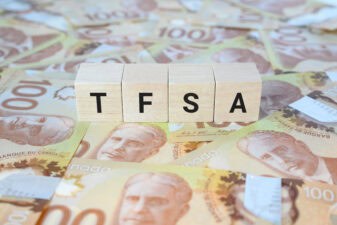Saving more and investing early is the simplest piece of advice you can get for growing your wealth. But it’s not as easy when you actually sit down and do it. First of all, saving more requires that you exercise serious financial discipline.
The second part is even more complicated, investing as early as possible is sound advice, as it capitalizes on the power of compounding. Still, if you don’t choose the right stock, or mismanage your portfolio, the compounding may not be able to make up for it.
But there is another factor to consider. Where should you hold your investments? The obvious answer is the registered accounts with tax benefits, i.e., RRSP and TFSA. But there is another option as well, the non-registered accounts.
They don’t offer any tax benefit, which is why many people tend to stay away from them. But there are scenarios in which using a non-registered account may be beneficial for your financial health.
One of them is if you have already maxed out your TFSA and RRSP, and you still want to save or invest. For example, if you have a $100,000 yearly income, and you have decided to at least save and invest 30% of it, the registered accounts alone aren’t going to cut it.
Registered accounts
Keeping securities in your RRSP gives you a tax benefit right off the bat. If you max out your RRSP contributions by putting in $18,000 there, you will save about $6,500 on your tax bill. The $6,000 you place in your TFSA won’t get you any tax benefit now, but you will reap the fruits of its tax-free nature later down the road.
For RRSP and TFSAs, you may choose stocks that have a strong chance of long-term and steady growth. One good example would be the Toronto-Dominion Bank (TSX:TD)(NYSE:TD).
It’s the second-largest bank in the country, and a relatively fast grower compared to others in the Big Five. It’s also a Dividend Aristocrat with payout increasing streak of 9 years. Currently, the bank is offering a juicy yield of 4.4%.
It has a five-year CAGR of 8.4%, which means that even if you allocate one-sixth of your total RRSP and TFSA contributions toward TD (a total of $4,000) every year, you may be sitting at a half a million dollars in 30 years.
That’s simply from its growth, not the dividends. This type of long-term and dependable growth is an ideal pairing with the tax-sheltered registered accounts.
Non-registered account
If you have placed $24,000 in your registered accounts to max them out, you still have $6,000 left to invest. You can spend it, hold on to it as cash, or earn a minimal interest from it when it’s in a savings account. You can also invest it using a non-registered account.
Two things to remember about the non-registered accounts are that the eligible Canadian dividends are taxed more favourably than your primary income — and that only half of your capital gains are taxed on the marginal rate.
The investments that pair best with non-registered accounts are high-yield dividend stocks (eligible) and growth stocks. If you can find a single company with both traits, you may want to diversify.
A Dividend Aristocrat like TC Transcontinental is a high-yielding stock with a stellar dividend history. Similarly, Air Canada is a decent growth account you may consider for your non-registered account, especially when it’s undervalued.
Foolish takeaway
Even with the tax implications, a non-registered account can turn out to be a useful tool if you pick the right stock. For most retail investors, registered accounts and smart diversification is the best way to go.
But if you have more to invest and you’re good at evaluating and screening stocks, adding non-registered accounts in the investing mix can have far-reaching growth benefits.








